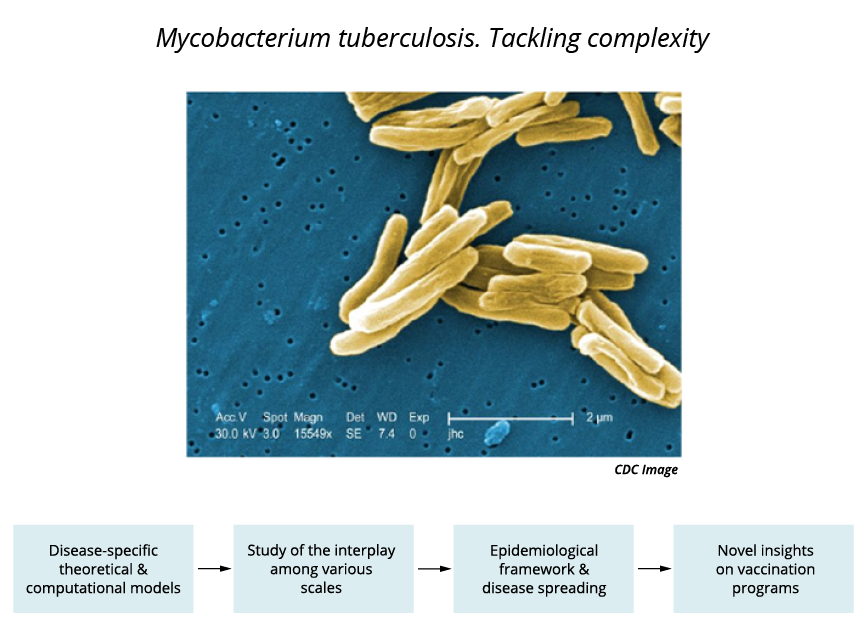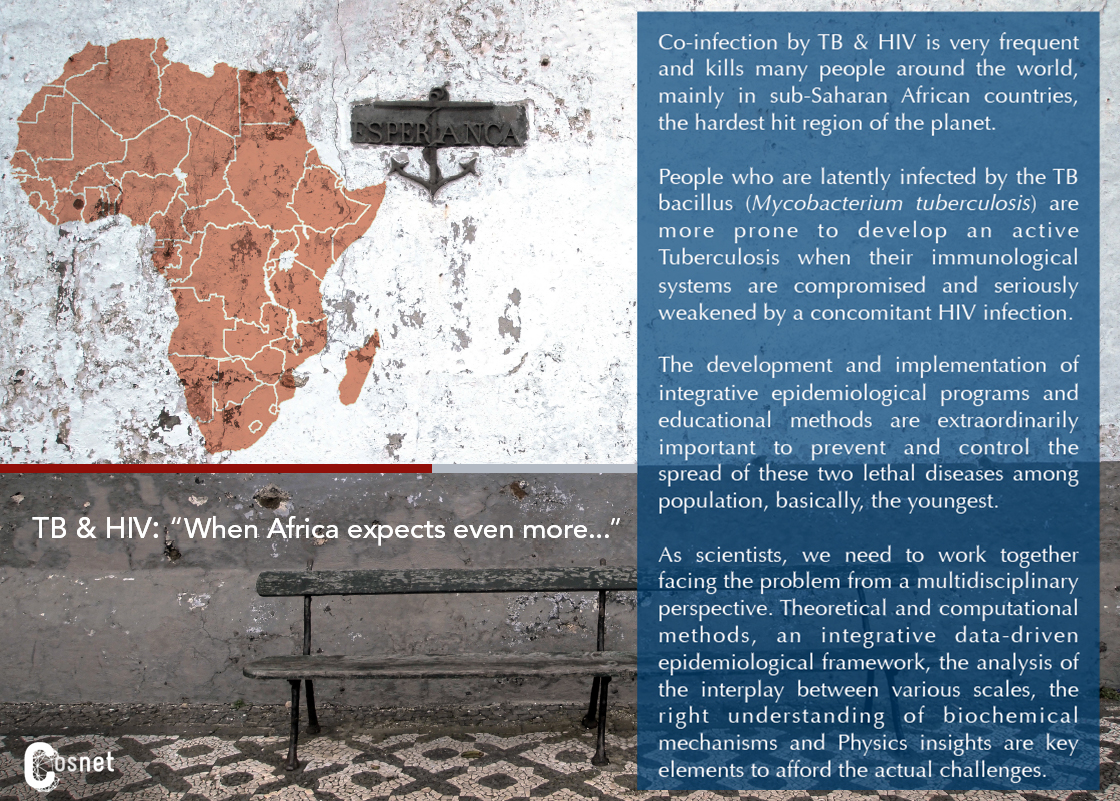Epidemiology
Classical Epidemiology Multi-scale Diseases Tuberculosis (TB) Spreading Gripenet.es (Sp. Version)TB Spreading
TB is one of the oldest and deadliest diseases in the world. In 2012, an estimated 8.6 million people developed TB and 1.3 million died from the disease, including 320.000 deaths among HIV-positive people (Global Health Observatory-WHO). The evolution of this insidious pathogen has been linked from the beginning to the evolution of humans. For several years, there is growing concern over the rising cases of MDR TB worldwide and the real need for discovering an effective vaccine (the BCG vaccine is very old and has a limited effectiveness for preventing the disease), is an obvious fact.
Accurate and quantitative epidemiological modeling of the spreading of Mycobacterium tuberculosis infection cannot be done using highly simplified traditional models. When modeling Tuberculosis infection, one is constrained to divide the infected group into latently infected and actively infected individuals. Moreover, individuals can also be categorized depending on whether or not they are infectious (as given by the presence of bacteria in the sputum). Further complications arise from the large variability of latency periods and the combination of many possible outcomes –elimination of bacteria and reactivation at different timescales, time elapsed until treatment is prescribed, etc. Finally, the mathematical modeling should also account for the effects of a large set of parameters whose variability strongly influences the outcome of infection with Mycobacterium tuberculosis, both at the individual and population levels. Correlations between Mycobacterium tuberculosis strains and several factors such as: ethnicity, socioeconomic status, malnutrition, crowding, social networks of interactions, concurrency with other diseases, and public health services are likely to affect the spreading process.
 Epidemic modeling and data collection about contact networks are intensively contributing to the search of efficient treatment and immunization policies. However, the lack of a complete description of connectivity maps and the singularities of the transmission mechanisms make the analysis extremely difficult. Much effort will be invested in the design of models that benefits from data of connectivity patterns in populations and social systems. With the advent of complex networks, we are now able to thoroughly study the influence of the real relationship patterns among individuals in the emergence of diseases at both local and global scale.
Epidemic modeling and data collection about contact networks are intensively contributing to the search of efficient treatment and immunization policies. However, the lack of a complete description of connectivity maps and the singularities of the transmission mechanisms make the analysis extremely difficult. Much effort will be invested in the design of models that benefits from data of connectivity patterns in populations and social systems. With the advent of complex networks, we are now able to thoroughly study the influence of the real relationship patterns among individuals in the emergence of diseases at both local and global scale.

Find out more by checking our main publications at: MAIN PUBLICATIONS

